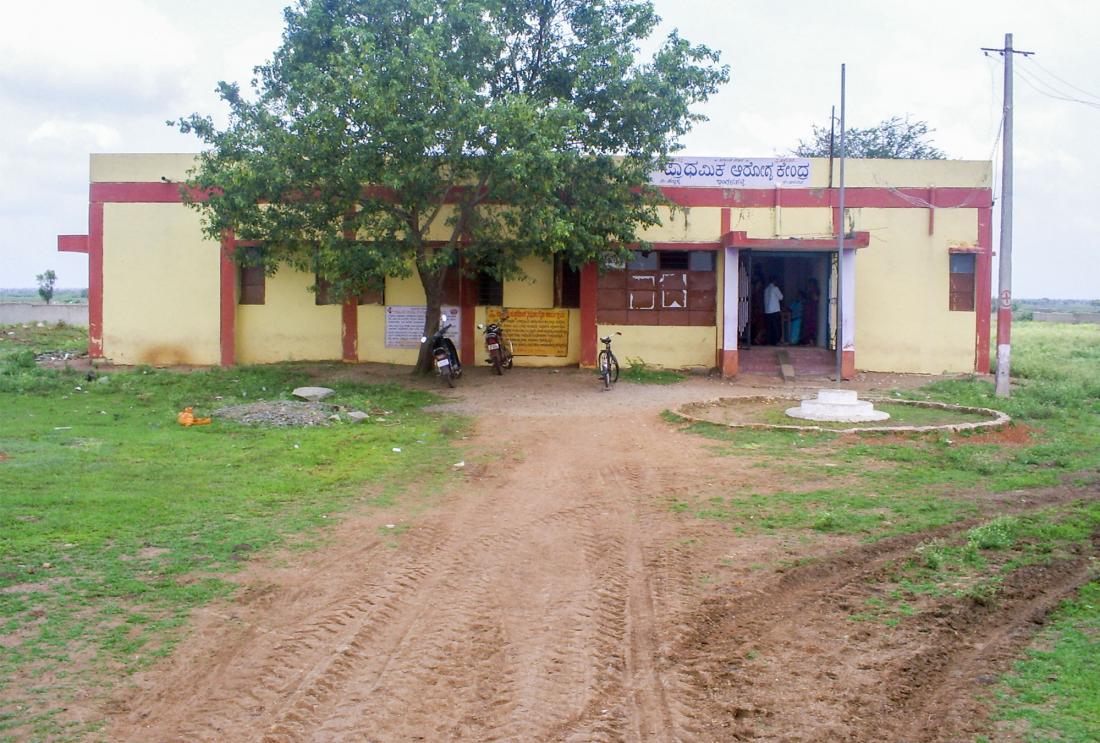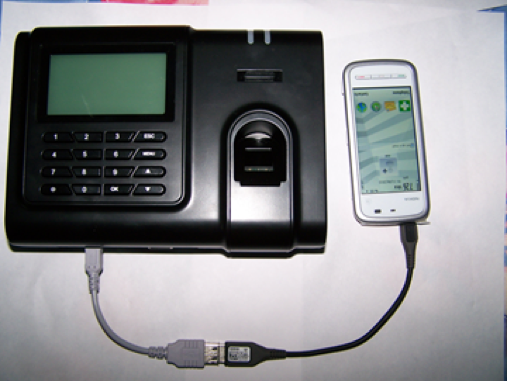Evaluating the Karnataka Integrated Medical Information and Disease Surveillance System (IMIDSS) in Primary Health Centers in India
- Health care providers
- Service provider performance
- Digital and mobile
- Community monitoring
Researchers tested whether a monitoring system that recorded employees’ fingerprints at the beginning and end of each day could improve staff attendance and patient health in primary health centers in Karnataka. The monitoring system increased attendance among medical staff, but not doctors, and absence penalties were not widely enforced. Though imperfectly implemented, the system led to a large increase in baby birth weight.
Policy issue
The government is the primary health care provider in many low income countries. However, despite large budgetary allocations and an extensive network of public health centers, health outcomes often remain poor. Evidence suggests that high rates of staff absenteeism, enabled by poor systems of accountability, may be a reason why health care systems do not function as intended. In India, past interventions targeting health worker absenteeism were unsuccessful because supervisors maintained discretion in recording attendance and issuing penalties. However, a biometric monitoring system that objectively records attendance and reports it to supervisors in real time, combined with a robust system of incentives and penalties for unauthorized absences, could potentially improve staff attendance and patient health.
Context of the evaluation
India has a network of over 24,000 public Primary Health Centers (PHCs) that provide basic services such as immunization and antenatal care to the poor. Yet absenteeism is high in PHCs across the country. In the PHCs in this study, doctors were present only 36 percent of the time in 2010. As a result, many citizens coming to receive care leave unattended and often end up visiting untrained or unqualified providers for treatment.
PHC staff have 15 days of guaranteed leave and can accumulate up to 30 days of “earned leave” which they can either take or cash out. Within PHCs, doctors are responsible for approving and maintaining paper records of medical staff members’ leave days (including themselves). The power to penalize lower-level employees such as nurses and lab technicians for unauthorized absence rests with the sub-district and district officials, while only state officials can penalize government doctors. In theory, after guaranteed leave days are depleted, district and state officials can deduct unauthorized absences from an employee’s leave balance if he cannot show adequate cause for the absences, but this was rarely enforced in practice.

Details of the intervention
Researchers evaluated the impact of a technological monitoring solution on health worker attendance and patient health. In 2010, the Government of Karnataka developed the Integrated Medical Information and Disease Surveillance System (“IMIDSS”) to address provider absence and entitlement leakages in PHCs. From a sample of 322 PHCs across five socio-economically diverse districts, 140 were randomly selected to receive IMIDSS while the remaining 182 continued with the status quo paper system. PHCs in the treatment group were equipped with an IMIDSS device, consisting of a fingerprint reader and a multi-purpose mobile phone. The device was used to record staff attendance via thumb impression at the beginning and end of each day. It was also capable of recording details about cash benefits paid to patients along with photographs and signatures and thumb impressions of beneficiaries taken at the clinic, and statistics regarding number of patients seen and the diseases treated. In practice it was primarily used for attendance monitoring.
Primary health centers in the treatment group were equipped with IMIDSS devices like this one, consisting of a fingerprint reader and a multi-purpose mobile phone.

Attendance data could be transferred wirelessly using the existing cellular network to the state health headquarters in Bangalore so supervisors could track staff attendance in near real time. This data was analyzed, processed, and then communicated back to the districts. This attendance information was coupled with an extensive system of incentives and penalties to encourage better attendance. Based on the attendance data, the government planned to issue both positive incentives, such as rewards for staff members with good attendance records, as well as negative incentives, such as reprimand letters, disciplinary action, suspension from service, docking of pay, and deduction of earned leave for employees with unauthorized absences.
Results and policy lessons
The monitoring system increased attendance among nurses, lab technicians, and pharmacists, even though the penalties for absence were rarely enforced by government officials, and led to substantial improvements in infant health.
IMIDSS use: While all PHCs received the system, over time it was functioning in only 66 percent of the random checks that researchers conducted. Yet when the machines were functioning, the PHCs used them. Sixty-seven percent of PHCs had uploaded data to the state government the day before the random check, which is consistent with the share of machines that were in working order. Yet the government was not able to effectively use this data to enforce the official leave policy. Only in a few cases did staff receive a formal notice to explain their absences, and government health officers did not deduct unauthorized absences from workers’ leave time. The complex process of deducting leave, which required cooperation among several government bodies, and the difficulty of recruiting doctors to work for public sector salaries in rural health centers hindered enforcement.
Impact on attendance: Even though the official leave policy was not strictly enforced, the monitoring system increased medical staff attendance by 5.5 percentage points (15 percent) from a base of 37 percent among medical staff in comparison PHCs. It had the greatest impact on nurses, lab technicians, and pharmacists (a 7 percentage point increase from a base of 40 percent), but virtually no effect on doctors. The stigma cost of being absent could have been higher for nurses and technicians than it was for doctors. Indeed, district health officials reported that they only expected doctors to be present about 54 percent of the time, while they expected 80 percent from other staff. There were no significant differences in the attendance effects across the five chosen districts in Karnataka, even though they were socio-economically diverse.
Impact on health: The new monitoring system seemed to have led to improved antenatal care and infant health. Pregnant women in treatment PHCs were 11 percentage points (27 percent) more likely to receive recommended Iron Folic Acid tablets, compared to 39 percent of the comparison group. Relative to expectant mothers in comparison PHCs, mothers in treatment PHCs were 8 percentage points (16 percent) more likely to have their baby delivered by a doctor, compared to 50 percent of the comparison group. Their newborn children were 4.6 percentage points (26 percent) less likely to be born underweight, compared to 18 percent of the comparison group, and weighed 67 grams more on average. However, pregnant women in treatment areas shifted away from the newly monitored PHCs to deliver in larger public and private hospitals. They were also 7 percent less likely to know about their state entitlements for subsidized care and paid a higher price to deliver their children.
In this case, an attendance monitoring system led to health improvements, but its imperfect enforcement illustrates the limits of technological monitoring solutions when they are not combined with changes in the broader rules governing health workers. Future research could investigate whether investing in more nurses, who responded to monitoring, could improve care or if combining monitoring with more realistic work expectations for doctors (more days off, fewer days in rural areas) could improve their attendance.
The results of the randomized evaluation informed the government’s decision to end the attendance monitoring program, saving taxpayers money and avoiding an added burden and wasted time on the part of the government. For more details, see the evidence to policy case study. USAID's Development Innovation Ventures (DIV) assessed this intervention as being one of its five most cost-effective investments, generating an estimated US$17 in social benefit for every US$1 spent.

